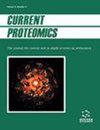Protein aggregation and self assembly in Health and Disease
IF 0.5
4区 生物学
Q4 BIOCHEMICAL RESEARCH METHODS
引用次数: 3
Abstract
Self-attachment of proteins leading to the formation of highly insoluble protein oligomers and aggregates has become an important focus of research owing to its diverse implications in pathophysiology and diseases. This has become a more frequent phenomenon in most neurological and neurodegenerative diseases as well as in dementia. In recent years such event of protein aggregation has linked to other disease conditions, disorders or adverse health conditions. Interestingly, aggregation of protein also plays role in development, growth or metabolism. Most often physiological proteins are initially bio-synthesised in native or nascent geometrical forms or conformations but later they undergo specific folding pattern and thereby acquire a stable configuration that is biologically relevant and active. It is highly important that these proteins remain in their biologically active configuration in order to exert their functional properties. Any alteration or change to this structural configuration can be detrimental to their specific functions and may cause pathological consequences leading to the onset of diseases or disorders. Several factors such as the action of chaperones, binding partners, physiological metal ions, pH level, temperature, ionic strength, interfacial exposure (solid-liquid, liquid-liquid, gas-liquid), mutation and post translational modification, chemical changes, interaction with small molecules such as lipids, hormones, etc. and solvent environment have been either identified or proposed as important factors in conferring the ultimate status of protein structure and configuration. Among many misfolding protein conformations, self-assembly or aggregation is the most significant. It leads to the formation of highly oligomeric self-aggregates that precipitate and interfere with many biochemical processes with serious pathological consequences. The most common implication of protein aggregation leading to the formation of deposits / plaques of various morphological types is the onset of neurological and neurodegenerative diseases that include Alzheimer’s, Parkinson’s, Huntington, ALS (Amyotrophic Lateral Sclerosis), CJD (Creutzfeldt Jakob Dementia), Prion diseases, Amyloidosis and other forms of dementia. However increasingly studies revealed that protein aggregation may also be associated with other diseases such as cancer, type 2 diabetes, renal, corneal and cardiovascular diseases. Protein aggregation diseases are now considered as part of “Proteinopathy” which refers to conditions where proteins become structurally abnormal or fail to fold into stable normal configurations. In this review, we reflect on various aspects of protein self-aggregation, potential underlying causes, mechanism, role of secondary structures, pathological consequences and possible intervention strategies as reported in published literatures.健康与疾病中的蛋白质聚集与自组装
蛋白质的自附着导致高度不溶性蛋白质寡聚物和聚集体的形成,由于其在病理生理学和疾病中的多种意义,已成为研究的重要焦点。这在大多数神经和神经退行性疾病以及痴呆症中已经成为一种更常见的现象。近年来,这种蛋白质聚集事件与其他疾病、失调或不良健康状况有关。有趣的是,蛋白质的聚集也在发育、生长或代谢中发挥作用。大多数情况下,生理蛋白最初以天然或新生的几何形式或构象进行生物合成,但后来它们经历了特定的折叠模式,从而获得了具有生物学相关性和活性的稳定构型。为了发挥其功能特性,这些蛋白质保持其生物活性结构是非常重要的。这种结构构型的任何改变或改变都可能损害它们的特定功能,并可能引起病理后果,导致疾病或失调的发作。伴侣、结合伙伴、生理金属离子、pH值、温度、离子强度、界面暴露(固-液、液-液、气-液)、突变和翻译后修饰、化学变化、与小分子(如脂类、激素等)的相互作用以及溶剂环境等因素已被确定或提出为决定蛋白质结构和构型最终状态的重要因素。在许多错误折叠的蛋白质构象中,自组装或聚集是最重要的。它导致形成高度低聚的自聚集体,沉淀并干扰许多生化过程,造成严重的病理后果。蛋白质聚集导致各种形态类型的沉积物/斑块形成的最常见含义是神经和神经退行性疾病的发病,包括阿尔茨海默氏症、帕金森氏症、亨廷顿氏症、肌萎缩性侧索硬化症(ALS)、克雅氏痴呆症(Creutzfeldt Jakob Dementia)、朊病毒病、淀粉样变性和其他形式的痴呆症。然而,越来越多的研究表明,蛋白质聚集也可能与其他疾病有关,如癌症、2型糖尿病、肾脏、角膜和心血管疾病。蛋白质聚集性疾病现在被认为是“蛋白质病”的一部分,“蛋白质病”指的是蛋白质在结构上异常或无法折叠成稳定的正常构型的情况。在这篇综述中,我们反思了蛋白质自聚集的各个方面,潜在的潜在原因,机制,二级结构的作用,病理后果和可能的干预策略,已发表的文献报道。
本文章由计算机程序翻译,如有差异,请以英文原文为准。
求助全文
约1分钟内获得全文
求助全文
来源期刊

Current Proteomics
BIOCHEMICAL RESEARCH METHODS-BIOCHEMISTRY & MOLECULAR BIOLOGY
CiteScore
1.60
自引率
0.00%
发文量
25
审稿时长
>0 weeks
期刊介绍:
Research in the emerging field of proteomics is growing at an extremely rapid rate. The principal aim of Current Proteomics is to publish well-timed in-depth/mini review articles in this fast-expanding area on topics relevant and significant to the development of proteomics. Current Proteomics is an essential journal for everyone involved in proteomics and related fields in both academia and industry.
Current Proteomics publishes in-depth/mini review articles in all aspects of the fast-expanding field of proteomics. All areas of proteomics are covered together with the methodology, software, databases, technological advances and applications of proteomics, including functional proteomics. Diverse technologies covered include but are not limited to:
Protein separation and characterization techniques
2-D gel electrophoresis and image analysis
Techniques for protein expression profiling including mass spectrometry-based methods and algorithms for correlative database searching
Determination of co-translational and post- translational modification of proteins
Protein/peptide microarrays
Biomolecular interaction analysis
Analysis of protein complexes
Yeast two-hybrid projects
Protein-protein interaction (protein interactome) pathways and cell signaling networks
Systems biology
Proteome informatics (bioinformatics)
Knowledge integration and management tools
High-throughput protein structural studies (using mass spectrometry, nuclear magnetic resonance and X-ray crystallography)
High-throughput computational methods for protein 3-D structure as well as function determination
Robotics, nanotechnology, and microfluidics.
 求助内容:
求助内容: 应助结果提醒方式:
应助结果提醒方式:


